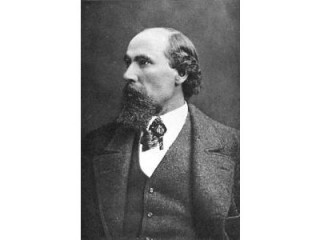
James J. Hill biography
Date of birth : 1838-09-16
Date of death : 1916-05-29
Birthplace : Rockwood, Ontario, Canada
Nationality : Canadian-American
Category : Arhitecture and Engineering
Last modified : 2011-07-19
Credited as : Railroad executive, engineer, Great Northern Railway
James Jerome Hill was born on Sept. 16, 1838, near Rockwood, Ontario, Canada, of parents of Irish background. His formal education ended with his father's death in 1852, and he began clerking in the local general store. At the age of 18 he left Canada for St. Paul, Minn., at that time a small frontier trading post at the head of the navigable portion of the Mississippi River. During his first years there Hill worked as agent and clerk for various packet companies, meanwhile making valuable contacts and establishing a reputation for integrity. When the Civil War started in 1861, Hill's attempt to enlist was rejected because of the sightless eye that was the result of a childhood accident.
Hill ventured into an independent forwarding business in 1865 and a year later agreed to provide fuel for the St. Paul and Pacific Railroad. This experience, together with his involvement in companies transporting goods and passengers between St. Paul and Winnipeg, provided Hill with a thorough grasp of the area's transportation opportunities. He also entered into a partnership in the Red River Transportation Company. However, his major interest remained the fuel business, which provided him with an increased standing in the community and some much-needed capital.
In 1878 Hill and his associates purchased enough securities in the St. Paul and Pacific Railroad (which extended into the region northwest of St. Paul) to control it. Hill's brilliant management not only resurrected the road but extended it to the Canadian border and westward through the Dakotas to Great Falls, Mont. (1887), and on, finally, to Seattle, Wash. During construction the company was reorganized as the St. Paul, Minneapolis and Manitoba Railway. It now occupied all of Hill's time.
Hill's expansion policy required using steel rails instead of iron ones and called for connecting all the region's important towns. The expanded railroad encouraged settlement in the region and corresponding improvements in agricultural methods, as well as improvement of terminal facilities. Unlike many railroad men, Hill preferred financing through stocks rather than bonds; this led him to reorganize the railroad in 1890 as the Great Northern Railway Company. (No basic changes in corporate organization occurred after 1890 until the 1970 merger of the Great Northern with the Northern Pacific and the Burlington lines.)
Competition from the rival Northern Pacific Railroad led Hill to attempt to get control of that line during the 1890s, after the Northern Pacific had fallen into receivership. However, his effort to merge the two lines failed when the U.S. Supreme Court upheld an injunction stating that the action would create a monopoly. Hill personally still owned a large block of Northern Pacific stock, and in 1901 the two companies purchased 97 percent of the Burlington Railroad's outstanding stock. This gave Hill's roads entrance into Chicago and access to new markets in the Midwest and South and checked E. H. Harriman of the Union Pacific Railroad, who also had wanted the Burlington.
Harriman's group then bought control of the Northern Pacific, an action which precipitated a stock war. The issue was resolved in 1901 with the creation of the Northern Securities Company, a holding company which included the Great Northern, Northern Pacific, and Burlington lines. This new organization was immediately attacked as monopolistic, a view which the Supreme Court sustained in 1904. Three years later Hill resigned as president of the Great Northern and turned his attention to public interests.
Hill also had been a member of the original syndicate that financed the Canadian Pacific Railway and formed the Great Northern Steamship Company. He collected art and endowed the Hill Reference Library in St. Paul. In 1867 he had married Mary Theresa Mehegan, who bore him 10 children.
















